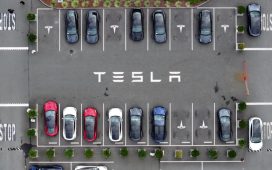The research arrives amid broad hope that electric, autonomous shared taxis can someday help governments reach pollution-reduction goals. Specifically, it comes at a time California lawmakers may codify such hopes into law.
Senate Bill 500 would all but mandate an all-electric future, ensuring all new light-duty robotaxis deployed in the state emit zero emissions by the 2031 model year. This month, the bill passed the state’s Senate and Assembly, and it awaits a signature from Gov. Gavin Newsom. The bill has garnered wide support from clean-energy groups.
An analysis from national nonprofit Union of Concerned Scientists found ride-hailing services cause 69 percent more pollution than the trips they replace, largely because of “deadheading” miles that accumulate when vehicles drive around without passengers. Electrifying ride-hailing vehicles becomes an environmental game changer — cutting emissions by half compared with private-vehicle trips and 70 percent in pooled-ride situations.
“Automated vehicles can be part of a clean, equitable transportation system as long as they are run on zero-emission electricity, lead to widespread pooling of trips and are deployed in coordination with frequent, reliable and accessible mass transit,” Elizabeth Irvin, a senior transportation analyst with the Union of Concerned Scientists, wrote in support of the bill.
But that’s essentially a long list of asterisks that the research paper, “Estimating the Energy Impact of Electric, Autonomous Taxis: Evidence From a Select Market,” suggests won’t come to fruition without significant public-policy incentives.
Even without electric powertrains or autonomous-driving technology, Nunes says the U.S. could put a dent in emissions by pooling rides now. But American commuters have a long-standing aversion, and research underscores the problematic nature of expecting that to change with new technology.
A report from the University of California, Davis Institute of Transportation Studies issued this year found “pooled ride-hailing may become even more unappealing in an automated future.”
Research published by the Federal Transit Administration in August examined Phoenix-area paratransit riders. Those riders, who were using Waymo service, said riding with strangers was their “least desirable option” and autonomous solo travel resulted in more overall trips.
Likewise, Nunes’ research suggests a net increase in energy consumption and emissions will occur in electric robotaxis because riders will be even less inclined to pool with others.
“Invariably, what ride-pooling can do is increase your travel time,” Nunes said.
“And even more than that, it increases travel-time variability. It’s unclear when you are going to get somewhere, because you don’t know where other people are going. And the second part, for reasons of personal security and privacy, people don’t want to share their rides.”
Further, Nunes and his cohorts suggest cheap robotaxis might not augment mass transit, but instead diminish its ridership base.
That results in a double whammy of mass transit becoming less environmentally efficient on a passenger-per-mile basis and creating car trips that would not otherwise exist.







